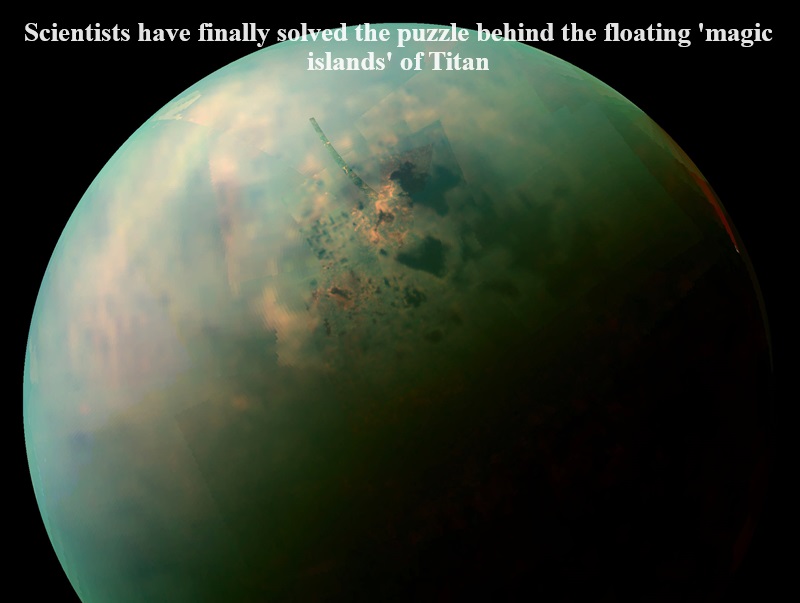
Researchers have unraveled the mystery of Titan’s floating “magic islands,” Saturn’s largest moon, discovering that these phenomena are glacier-like snow clusters resembling honeycomb structures. Initially observed in 2014 by the Cassini-Huygens spacecraft, the mysterious islands were shiny, moving spots above Titan’s liquid methane and ethane lakes, appearing and disappearing between observations.
Led by Xinting Yu, an assistant professor at the University of Texas, a new study sheds light on Titan’s magical islands, proposing that they are “floating chunks of porous, frozen organic solids in shapes similar to honeycomb or Swiss cheese.” These formations likely accumulate after snowfall from Titan’s thick atmosphere, rich in methane and organic molecules, causing snow to freeze onto the moon’s surface and into its lakes.
Titan’s atmosphere, 50% thicker than Earth’s, enables the clumping together and freezing of organic molecules, forming the snow that accumulates on the surface. Unlike Earth, where snow dissolves upon contact with liquid bodies, Titan’s lakes, already saturated with organic molecules, allow the complex organic snow molecules to persist without immediate dissolution.
The porous nature of the snow clumps, resembling honeycomb structures, enables them to float if sufficiently large until methane or ethane infiltrates, causing them to sink as the voids fill. The researchers propose that the snow clumps are too small for this mechanism to occur individually. Still, on lakeside shores, clusters of accumulated snow could break off into large pieces and float on the methane and ethane lakes, similar to ice sheets calving from glaciers and floating on Earth’s seas.
Additionally, the study addresses another Titan enigma – the presence of tranquil liquid bodies with small waves. The researchers suggest that a floating layer of frozen solids covers the surface of Titan’s liquid bodies, providing them with smoothness.

Post Your Comments